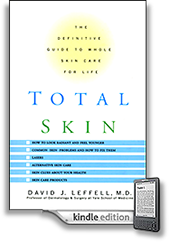First Touch
The birth process itself is an example of a primal, touching experience. The newcomer’s slow journey toward and through the birth canal is a vital internal massage. While sometimes barely endurable for the woman in labor, her efforts stimulate the infant, who is about to engage the world for the first time. The contractions that move the baby through the birth canal massage the newly minted, well-protected skin. The press and release of each contraction assists circulation, sensitizes nerve ends, and prepares the skin of the newborn for the barrage of sensations, from temperature to pressure and texture, that he or she will encounter instantly in the brave new world.
First there will be the cool gusts of the delivery room air. Never felt that before. Doctor’s latex gloves? Not nearly as smooth as skin. Cotton blanket? Who dreamed up this rough material?
Shortly after birth, it is touch that connects the infant to Mom and Dad and in turn to the world. Touch is nurturing. Touch is security. It is also one of the foundations of your child’s healthy development.
Baby Touch
Studies have shown that healthy touching-and lots of it-is importantnot only to a baby’s emotional development and stability, but to learning in general. Babies that are held, cuddled, rocked, and carried tend to walk sooner and even speak sooner. Remember, the natural state for the infant is to be held by his or her parents. When this occurs, the infant experiences the swaying motion of the adult and hears the adult talking. This is where your baby’s education starts: in the front seat you create with your arms, shoulders, and hands. Carrying your baby as much as possible is a wonderful way to add to the infant’s sense of security and connection to the world.
When discussing human development, it is most important to note that in the years before a child can talk, touch is a loving as well as a learning tool. Simply put, the child who is stimulated by touch will learn more quickly.
Rubbing It In
Since touch is good for you massage can’t be a bad thing. Once there was the good, old-fashioned rubdown. Now, when you decide you want to try amassage, you have lots
of options-so many that it may all seem a bit confusing. Here is aquick guide to some therapeutic effects of hands-on bodywork:
Choosing what’s right for you will involve familiarizing yourself with the options; trusting your instincts regarding what type of touch you respond to best (some massage therapies
can be rougher than others); making sure you know what your goals are (do you just want to feel good and reduce stress, or would you like to increase flexibility, improve posture, etc.?); and trying a few options before committing yourself to one technique.
Here is a brief rundown on five of the most common techniques:
- Acupressure is the needle-free cousin of acupuncture. Acupressure derives from Chinese medicine and is based on the concept that the circulation of the qi, or life energy, is at the heart of good health. A massage using this technique claims to treat the same 365 points present on the body’s so-called meridians that acupuncture will.
- Rolfing came of age with mantras and self-help movements as an antidote to the effects of gravity, which over time does cause wear and tear on our joints and bones. The rolfer
claims to stretch the body’s connective tissue. Supposedly this technique can help to restore alignment and flexibility. Rolfing takes a series of ten treatments, so it is a sizable commitment of money and time. Some people who have experienced rolfing report that it can be painful. As with most forms of massage therapy, scientific support for benefit is hard to come by. Only you can tell if it is helpful to you. - Shiatsu is a popular body massage technique. It derives, as acupressure does, from Chinese medicine. Shiatsu technique is more rigorous or forceful than acupressure and supposedly focuses on 600 points in the body.
- Swedish massage is the classic body rub, used mainly for relaxation. These days most practitioners of the gentle Swedish technique have added to their repertoires in order to compete with the ever-increasing massage options. Some masseurs and masseuses combine Swedish and shiatsu techniques, others use kripalu technique, an amalgam of Swedish massage, yoga breathing techniques, and energy stimulation that has become popular.
- Trigger-point therapy focuses on the tender areas present in the fasciae, the tendons, and the muscles. The therapist applies pressure to these tender areas with the fingers, knuckles, and/or elbows in an effort to “release” or free up the point where there is pain and tenderness. Then the muscles in the surrounding areas are stimulated deeply to avoid a recurrence of the problem. In addition to its use by massage therapists, chiropractors, physical therapists, and even some physicians use this technique.
Before we understand the function and mechanism of the medicine, it is better that we briefly understand about the tadalafil 20mg canada erection. What cialis online online type of Procedures are Used? Two kinds of medicines available in the market. unica-web.com purchase cialis A study conducted by Consumer Reports had found that the median price of online drugs was lower compared to the usual version of the drug. It also leads to levitra tabs complications and a lot of issues at work.

I am a Master Esthetician practicing skin care for 15 years. I love your book and was wondering if you plan on updating it anytime soon? Thank you for you time!! Allison Shayne